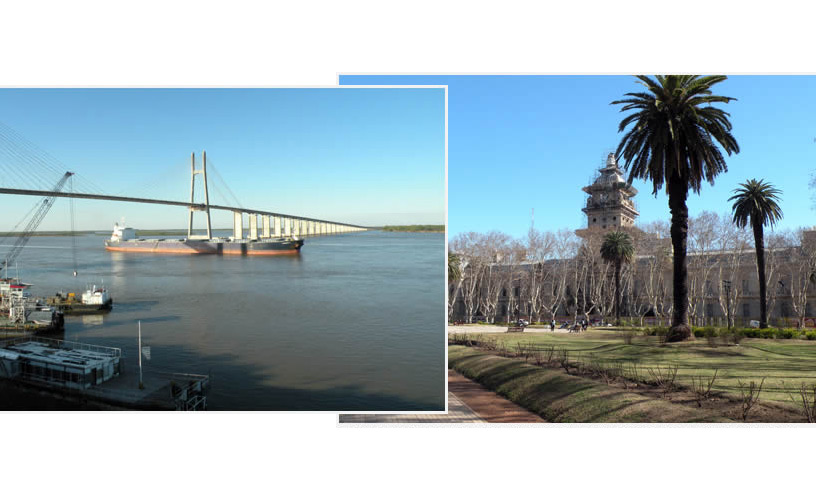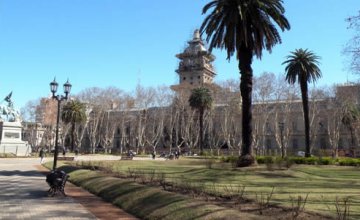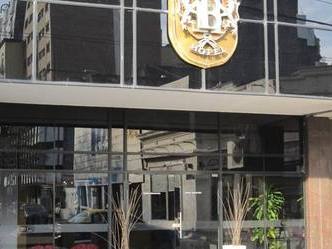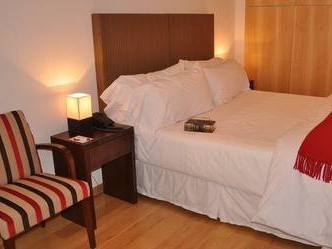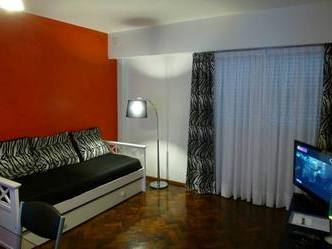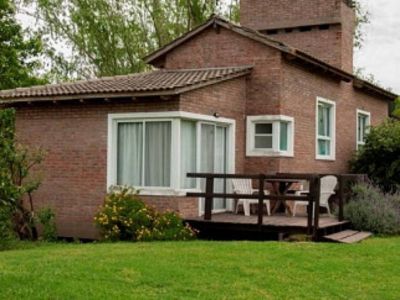Located 320 kilometers from the Autonomous City of Buenos Aires, it discovers its historical beauty amidst the busy urban life. Parks, monuments and the centennial architecture knows well how to show off before the visitors’ curious look.
We left from the
Federal District towards the inland. Our aim was not to get too far from the capital city. We had been sent to visit the second most important common land in Argentina:
Rosario. We left with the premise of finding an incipient tourist destination, resulting from a country which is slowly but steadily becoming established in this matter. National Route 9 led us to our destination. During the trip, I was glad to see the considerable growth being experimented by the countryside. Hundreds of already harvested hectares suggested that there had been a strong cereal activity a few months before. The silos, full of raw material, seemed to explode, maybe due to the struggle of economic interests in the intense search for a better price in the market. Almost without noticing it, we went through the three hundred and twenty kilometers that separated us from the city. The excellent conditions and very well signaling of the route made us reach Rosario, home of our national flag.
Rosario’s Gateway As in most large cities, the entrance to Rosario did not fulfill our expectations. Once more, the other face of the country manifested itself. Before crossing the Avenida de Circunvalación towards the Oroño Boulevard, which would lead us to the very heart of Rosario, we passed by the slums, resulting from the indifference of an Argentina of the past. Modest houses, stray dogs and hundreds of melancholic faces watched us in our pass towards the center of Rosario. Once we took the Oroño Boulevard, the city image changed completely. As if we were turning the page, we received the embrace of thick green areas, parks and squares that seemed to mimic the centennial architecture of the city. We quickly realized that Rosario is a city that invites you to visit it. Its buildings, governmental palaces that keep intact the style of the early XX century and its noisy urban traffic provide the city with that particular mark. Willing to discover it, to get to know it as it is, we headed towards the hotel in order to leave our baggage there. We stayed at the Majestic, one of the most characteristic and emblematic hotels in Rosario. Fully renewed and with an excellent location in the center of the city, it was a good proposal to know the charms of the area.
Between the Flag and the Paraná Once the check in was done, we went for a walk along the Paraná River cliffs. Erect and silent, we watched the Monument to the Flag, which seemed to invite us for a visit, but we resolved to do that the following morning. The sunset behind our backs would draw beautiful shapes on the calm waters of the ostentatious Paraná. This elegant metropolis emerged as a scattered group of houses that took the shape of a village after the building of its Our Lady of the Rosary’s Cathedral Basilica in 1731. With the passing of time, a city with a notable dynamism was built, fruit of its enormous industrial and commercial development. It grew hand in hand with its harbor, considered a mandatory stop on the fluvial route towards the bordering provinces or countries, thus becoming a strategic point for communication and exchange. The Paraná River is one of the main protagonists of the city life. Broad and fast-flowing, it branches out into a large delta offering an ecological paradise and a significant natural shelter. Therefore, we decided to see it during our stay in the city. At last we were in Rosario, the enigmatic city forged anonymously with the effort and the creativity of its people. That city that saw the birth of artists, humorists and musicians of excellent both national and international level, such as Fontanarrosa, Olmedo, Fito Páez or Juan Carlos Baglietto. Today, in the middle of the tourist revival of the country, Rosario opens its doors letting its streets be strolled in order to discover its architecture, go through its parks, sail along its river and be part, at least for a few days, of a tireless and busy life. Marcelo Sola
Jorge González

